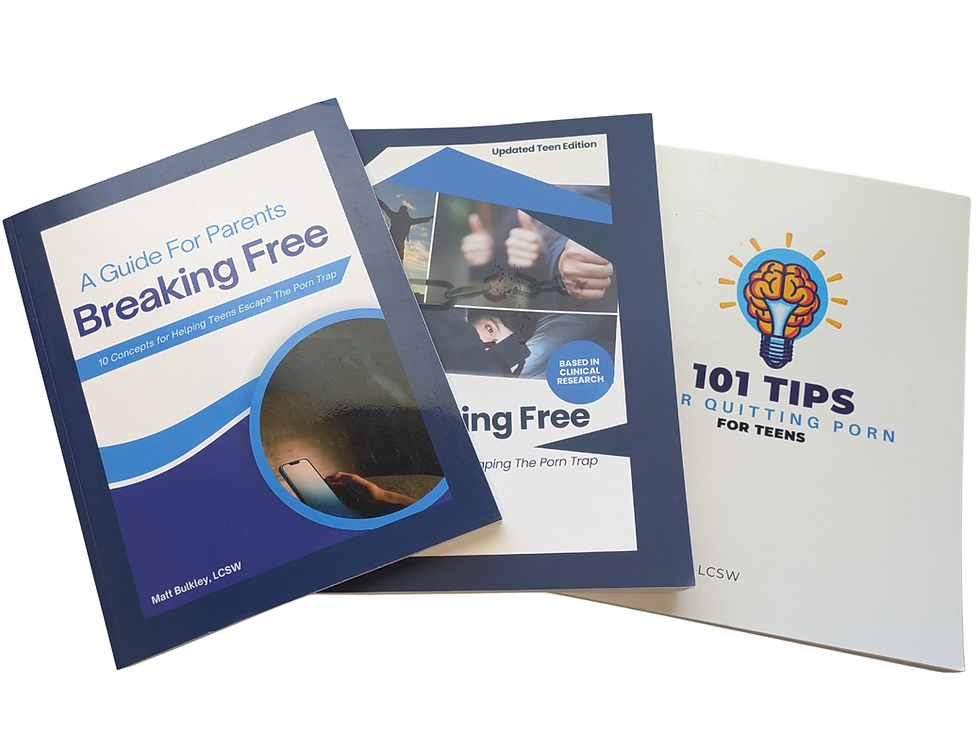How Watching Sports Highlights or Tutorials Can Help Your Teen Stay Focused During Pornography Recovery
- Matt Bulkley

- Jun 28
- 3 min read
When your teen is working to overcome a pornography addiction, finding healthy, engaging alternatives to redirect their attention is key. While strategies like journaling or goal-setting are important, even something as simple as watching sports highlights or tutorials can be a surprisingly effective—and research-supported—tool in their recovery journey.
Here’s why therapists and researchers agree: keeping the brain busy with something positive, exciting, and skill-focused doesn’t just pass time—it helps retrain the brain, reduce cravings, and build momentum toward lasting change.
Why Distraction Matters: The Science Behind the Shift
Addiction isn’t just about habit—it’s deeply connected to the brain’s reward system. When a teen watches pornography, it triggers a surge of dopamine, the brain chemical linked to pleasure and motivation. But over time, this rewiring can lead to compulsive behavior, even when they want to stop.
Fortunately, positive distraction—such as watching sports content—can help interrupt this pattern.
A study from the University of Cambridge highlighted how individuals using Cognitive Behavioral Therapy (CBT) were able to break harmful habits by intentionally replacing them with enjoyable, low-risk activities. For teens, this might mean pulling up highlights of a favorite basketball game, watching a tutorial on how to master a soccer trick, or diving into training tips for their favorite sport.
The key is that these videos activate the brain’s interest and motivation centers—but in a way that’s safe, uplifting, and aligned with their goals.
The Power of Engagement: Keeping the Mind Occupied
According to the Journal of Adolescent Health, teens who regularly engage in sports-related media or activities are less likely to report risky or compulsive behaviors. Why? Because watching content that’s high-energy, competitive, or skill-focused reduces boredom and stress, two major triggers for relapse.
Whether your teen is watching a breakdown of Steph Curry’s shooting form or a highlight reel of the World Cup, these clips do more than entertain—they distract the brain from cravings and re-anchor focus on something positive.
This kind of content also taps into what psychologists call “flow”—a state of deep mental focus and engagement. Studies show that flow states help reduce anxiety and build emotional regulation—both critical for teens recovering from pornography addiction.
Therapists Weigh In: Why This Works for Teens
Mental health professionals who work with adolescents often recommend this type of intentional media consumption. It’s not just about avoiding porn—it’s about replacing it with something that captures the same need for stimulation, challenge, or excitement.
Here’s what therapists love about this approach:
It promotes active engagement rather than passive scrolling
It builds confidence and motivation through learning and entertainment
It provides immediate access to a healthy alternative when urges hit
It reinforces identity and values—sports are often associated with teamwork, perseverance, and discipline
Plus, watching skill-based tutorials can even spark offline action—encouraging your teen to practice what they’ve learned, join a team, or become more physically active, all of which have well-documented mental health benefits.
How Parents Can Support This Strategy
You don’t need to be a sports expert to support this idea. Here’s how to help your teen incorporate it into their recovery plan:
Talk about the power of healthy distractions and how they work in the brain
Encourage them to curate a playlist of highlights or tutorials they enjoy watching
Make it a bonding activity—watch a game or favorite sports moment together
Praise the shift when they choose positive content over triggers
If they’re not into sports, the concept still applies—any skill-based, positive video content can serve the same purpose (like music, cooking, or creative how-to videos).
Final Thoughts: Redirect, Don’t Just Resist
Overcoming pornography addiction isn’t only about resisting the urge—it’s about redirecting the brain toward something that fuels instead of drains. Sports highlights and tutorials offer your teen an easy, enjoyable way to do just that.
When they swap the urge for a video that excites, inspires, or educates, they’re not just avoiding relapse—they’re strengthening their focus, building emotional resilience, and choosing something that aligns with who they want to become.










Comments